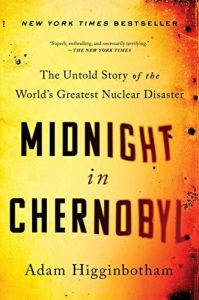Join getAbstract to access the summary!

Join getAbstract to access the summary!
Adam Higginbotham
Midnight in Chernobyl
The Untold Story of the World's Greatest Nuclear Disaster
Simon & Schuster, 2019
What's inside?
For decades after the Chernobyl nuclear disaster, the town’s vast “exclusion zone” remained contaminated.
Recommendation
The USSR expanded its nuclear power program in the 1970s as its economy stagnated. The first new nuclear plant opened in 1975 in Chernobyl, Ukraine. As journalist Adam Higginbotham masterfully reports, after a failed safety test on a Friday night in April 1986, Reactor Four exploded. The radioactive fire proved nearly impossible to extinguish, and the explosion contaminated the region for decades. This meticulously researched book offers fascinating technical details on nuclear power and a gripping portrait of the USSR’s final years.
Summary
About the Author
Adam Higginbotham writes for The New Yorker, The New York Times Magazine, Wired, GQ and Smithsonian.

















Comment on this summary